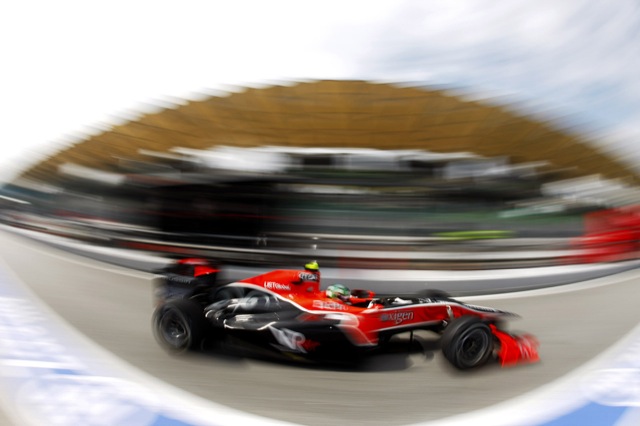One of Blog
This might get a bit convoluted as I have a habit of going off on tangents, so I apologise in advance…
…When an accident occurs on the circuit during a race, and the Race Director – Charlie Whiting – considers that waved yellow flags will not be enough to ensure safety of marshalls who will have to venture onto the track, he may order the
So, the safety car heads out of the pitlane with its flashing lights on. The cars will group up behind the safety car and overtaking is strictly forbidden. Generally speaking, the drivers are not allowed to pass the safety car, but some circumstances may allow the drivers to pass and complete another lap until the leader of the race is directly behind the SC.
This means that if the lead driver managed to pull out a 20 second gap to the driver in 2nd, that gap has now been completely erased, as he is now sitting on the leaders gearbox. Good news for racing, bad news for the leading pilot!
But what if the driver could do something now – when all the cars are bunched up together – that will save him time later on in the race? If the lead driver took his pitstop during the safety car period, he would rejoin 30 seconds or so after the final car has passed, but he would be able to cruise up to the back of the tail, and will only be (for arguments sake) 10 seconds behind the new leader on the track.
So the SC comes into the pitlane and the race restarts. The original leader of the race is now at the back of the pack, and could even be in last position. It is unlikely though, as he may have lapped other cars during the course of the
This task is made a little easier though, when the ‘post-safety-car’ leader comes in for his stop later in the race (along with everyone else). He will lose 30 seconds or so, and bearing in mind the original leader (now in 2nd) is only 10 seconds behind, the math speaks or itself. 10 seconds minus 30 seconds means the ‘post-safety-car’ leader will rejoin 20 seconds behind the original leader because he took his stop during the safety car.
Of course, all the teams are well aware of this, and it is often the case that the majority of cars will pit during the safety car. There have even been cases of cars queuing in the pits because the team can only work on one car at a time.
It is also worth pointing out that in my example above, I am making a lot of assumptions that usual do not corrospond to real-life Formula One racing.
Check out the offical
If anyone else has better way of explaining the safety car pitstop strategy, I would be more than willing to read/reference it.


















I’m always nagging my fiance with question after question and he gets so frustrated with me.
This is a really good explanation! Now… if you could do one about the new qualifying… :0)
Thanks for that – I think when I’m watching a race and this happens, I’ll try and figure out what’s going on…
Chris: I’ll get around to qualifying in early March, hopefully before the season begins 😉 And thank you for the kind words you made on your site.
Tom: I think that is probably the best way to understand it. When it happens this season, I’ll be sure to point it out. And any other anomolies as well.